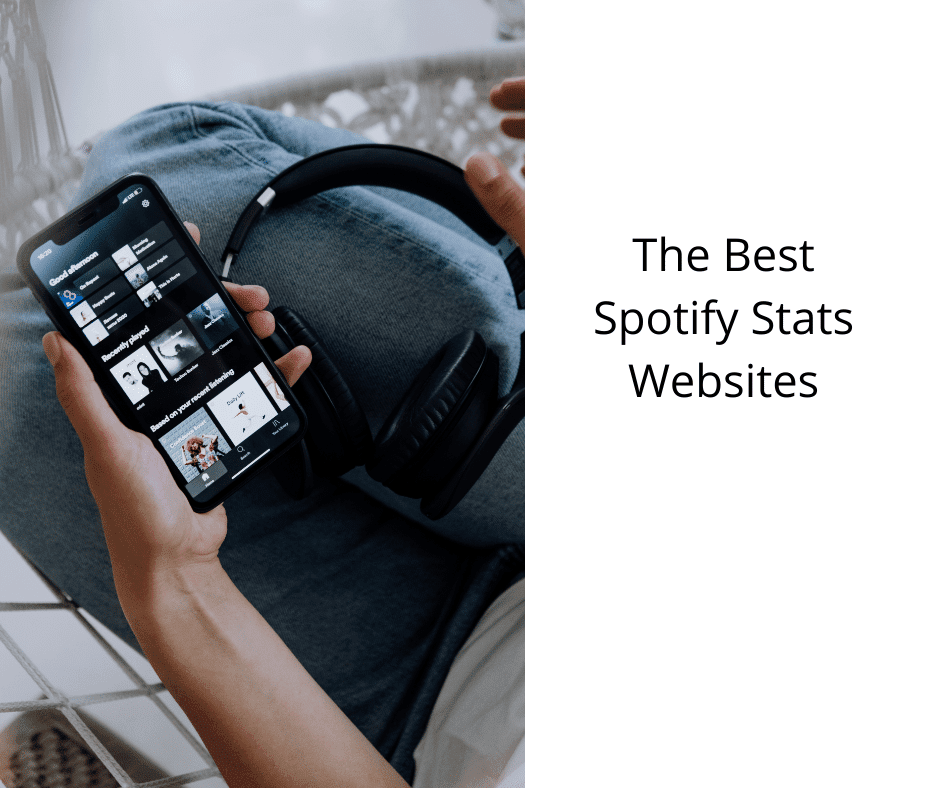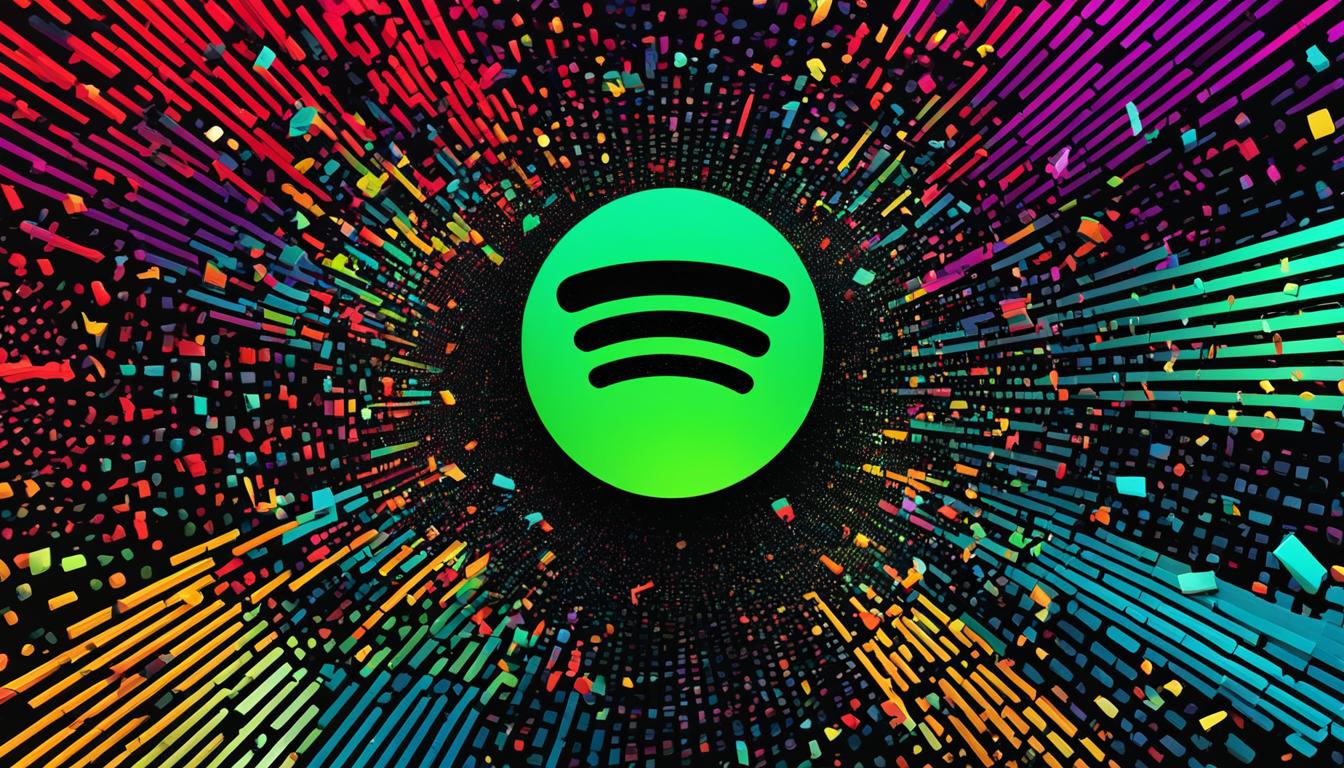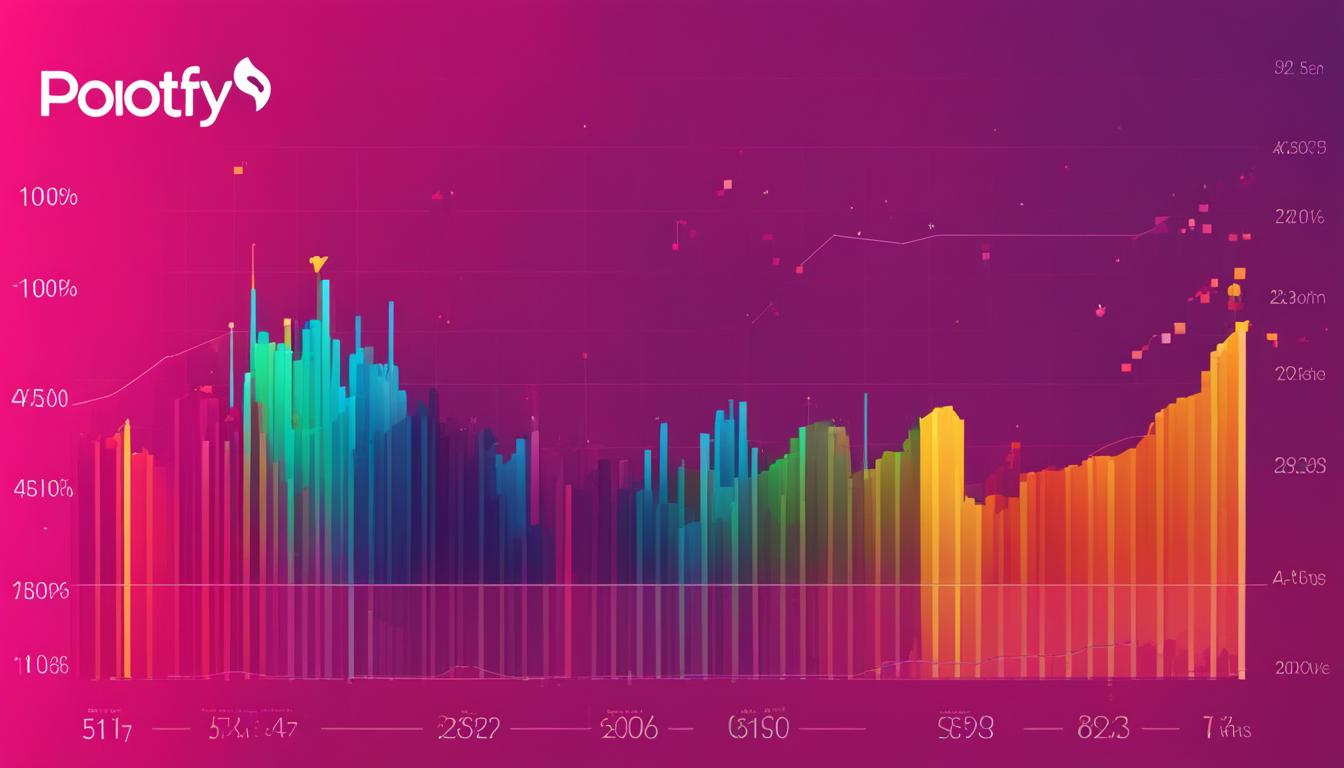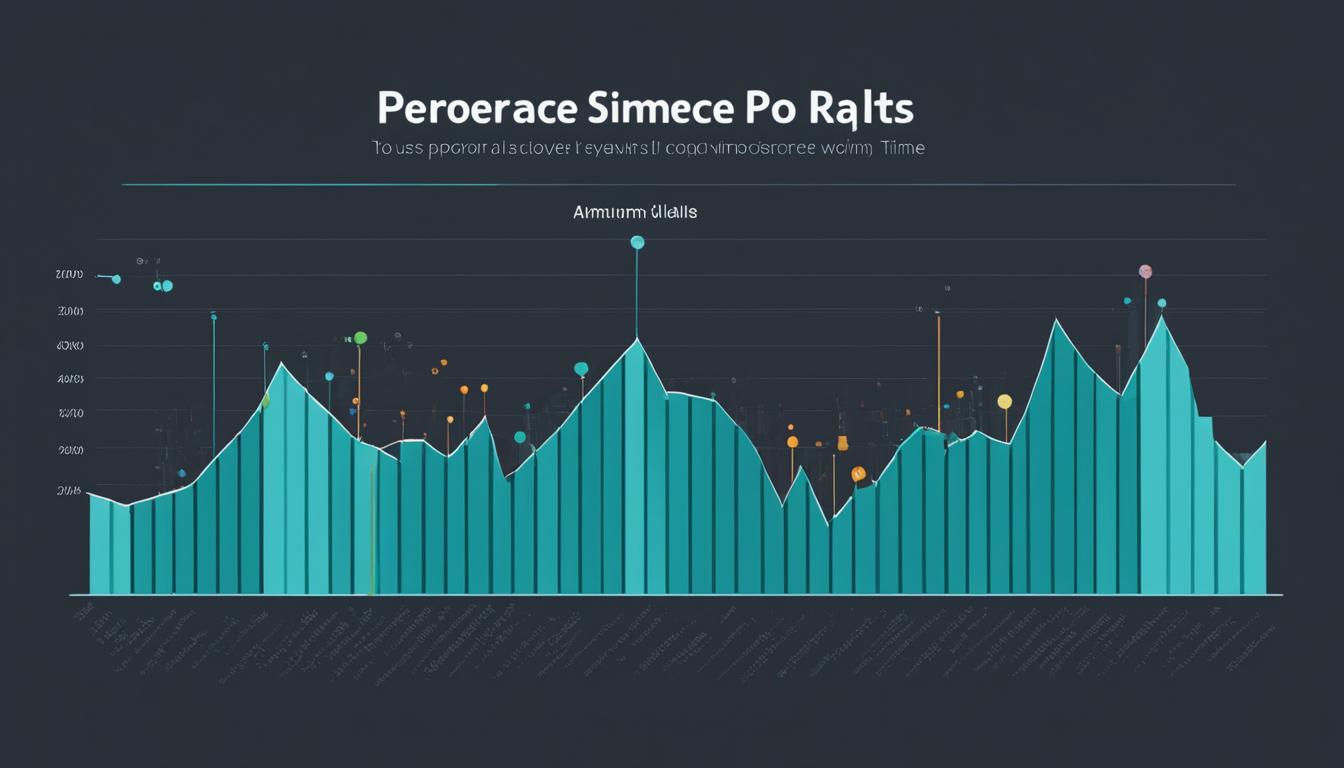Get ready to discover the enigmatic world of Spotify algorithms.
We, the collective music enthusiasts, embark on a journey to unlock the secrets behind our personalized playlists.
In this article, we dissect the power of Discover Weekly, unravel the mysteries of Spotify Radio, and decode the magic of Daily Mix.
With a data-driven approach, we demystify the factors that influence song popularity and explore the significance of track updates.

Join us as we uncover the hidden gems that make our Spotify experience truly unique.
Key Takeaways
- Spotify algorithms analyze data from millions of users to curate playlists and provide personalized recommendations.
- User engagement metrics like plays, skips, likes, and saves help shape personalized music recommendations.
- Collaborative playlists foster a sense of community and provide valuable data insights for Spotify.
- Follower count influences the personalized Spotify experience, playlist recommendations, and visibility of playlists and artists.
The Power of Discover Weekly
We love exploring the power of Discover Weekly, with its curated playlists and personalized recommendations. It’s fascinating to delve into the world of Discover Weekly analytics and uncover the secrets behind its ability to optimize playlist curation.
Spotify’s algorithms are designed to analyze data from millions of users, taking into account factors such as listening history, preferences, and even the listening habits of similar users. These algorithms work tirelessly in the background, using complex machine learning techniques to identify patterns and trends within the vast music library.
Unraveling Spotify Radio
But sometimes, it feels like Spotify Radio has a mind of its own, playing songs that don’t quite match our preferences. However, behind the scenes, Spotify’s algorithmic recommendations are hard at work, trying to understand our musical tastes and serve us the best possible experience. Spotify Radio uses a combination of user behavior, genre analysis, and collaborative filtering to curate personalized playlists for its listeners. It takes into account not only the songs we like, but also the songs we skip or dislike, to fine-tune its recommendations. This ensures that we are constantly discovering new music and hidden gems in Spotify Radio. To better understand how Spotify Radio works, let’s take a look at the following table:

| User Behavior | Genre Analysis |
|---|---|
| Songs Liked | Pop, Rock, Hip-hop |
| Songs Skipped | Country, Jazz, Classical |
| Songs Disliked | Metal, Electronic, R&B |
| Hidden Gems Discovered | Indie, Alternative, Folk |
Decoding Daily Mix
Sometimes when we open Spotify, we’re greeted with personalized playlists called Daily Mixes that combine our favorite songs with new discoveries. These playlists are carefully curated by Spotify’s algorithms, which strive to provide a unique and tailored listening experience.
To understand how Daily Mixes work, we need to unveil the algorithms that power them. Spotify uses a combination of user data, such as listening history, preferences, and music taste, to generate these playlists. By analyzing this data, Spotify’s algorithms can discover patterns in our listening habits and make informed recommendations.
They take into account factors like genre, tempo, and artist similarities to create a cohesive and enjoyable mix. With Daily Mixes, Spotify introduces us to new songs and artists while keeping our favorite tracks on rotation, ensuring a personalized musical journey each time we hit play.
Creating Your Perfect Playlist
When it comes to creating our perfect playlist, Spotify’s algorithms excel at providing us with personalized song recommendations based on our listening habits and preferences.

By analyzing our listening history, Spotify is able to curate a diverse selection of music genres that align with our musical taste.
Moreover, the algorithm takes into account the mood and tempo of the songs, ensuring a balanced and enjoyable listening experience.
Personalized Song Recommendations
We love how Spotify’s personalized song recommendations create the perfect playlist for us. Through advanced algorithms and data-driven analysis, Spotify is able to curate a unique listening experience tailored to our individual tastes.
The process begins with song discovery, as Spotify’s algorithms analyze our listening history, favorite artists, and saved songs to understand our preferences. This data is then used to generate personalized playlists that cater to our specific interests.

By analyzing the characteristics of the songs we enjoy, such as tempo, genre, and mood, Spotify can accurately recommend new songs that align with our musical preferences. This level of personalization creates an intimate connection between the listener and the platform, allowing us to discover new music that resonates with us on a deeper level.
Moving forward, let’s explore how Spotify goes beyond personalized playlists to curate diverse music genres.
Curating Diverse Music Genres
Our perfect playlist is curated with diverse music genres that cater to our individual tastes. By curating niche genres, we can expand our musical horizons and discover new artists and styles that resonate with us on a deeper level.
Here are three reasons why curating diverse music genres is essential:

-
Broadening our musical palette: Exploring different genres exposes us to a wide range of sounds, rhythms, and melodies, enriching our listening experience and allowing us to appreciate the beauty of various musical styles.
-
Discovering hidden gems: Niche genres often hide hidden gems that may not receive mainstream attention. By delving into these genres, we can uncover talented artists and unique tracks that we might’ve otherwise missed.
-
Personal growth and self-expression: Curating diverse music genres helps us express our individuality and reflect our evolving tastes. It enables us to create playlists that accurately represent our experiences, emotions, and personal journeys.
Balancing Mood and Tempo
One key aspect of creating our perfect playlist is balancing the mood and tempo of the songs to ensure a cohesive and enjoyable listening experience. By exploring genre preferences and analyzing user listening patterns, Spotify’s algorithms can effectively curate playlists that strike the right balance between mood and tempo. The table below provides a visual representation of how these factors are taken into account:

| Mood | Tempo |
|---|---|
| Upbeat | Fast |
| Relaxing | Medium |
| Energetic | Slow |
| Melancholic | Variable |
| Chill | – |
Spotify’s algorithms analyze the mood of a song based on its instrumentation, lyrics, and overall vibe, while tempo is determined by the beats per minute (BPM). By carefully selecting songs with complementary moods and tempos, Spotify ensures that listeners can seamlessly transition from one track to another, creating a personalized and enjoyable playlist.
Understanding User Engagement
When it comes to understanding user engagement on Spotify, there are several key metrics that can be used to measure it.
Metrics such as the number of plays, skips, likes, and saves can provide valuable insights into how users are interacting with the platform.
By analyzing these metrics, Spotify can gain a deeper understanding of user preferences and behaviors, which in turn can inform the algorithm’s recommendations.

The impact of user engagement on recommendations can’t be underestimated, as it plays a crucial role in shaping the personalized music experience that Spotify offers its users.
Metrics for Measuring Engagement
We use various metrics to gauge user engagement with Spotify. By measuring the effectiveness of our platform and understanding user retention, we can continuously improve the overall experience for our listeners.
Here are three key metrics we rely on:
-
Playtime: This metric helps us understand how long users spend listening to music on Spotify. It allows us to identify patterns and trends in user behavior, enabling us to recommend content that aligns with their preferences.

-
Skip rate: The number of times a user skips a song gives us valuable insights into their preferences and engagement level. By analyzing this metric, we can fine-tune our recommendation algorithms to provide a more personalized experience.
-
Playlist creation: When users create playlists, it shows a high level of engagement and investment in our platform. We analyze the frequency and diversity of playlist creation to understand user preferences and curate better recommendations.
Impact of Engagement on Recommendations
Our analysis of user engagement and its impact on recommendations has revealed a strong correlation between active listening habits and the effectiveness of our personalized algorithms. By considering user feedback, we can better understand the preferences and tastes of our listeners, allowing us to curate more accurate and tailored recommendations.
The effect of user feedback can’t be understated, as it provides crucial insights into individual preferences and helps us refine our algorithms. Additionally, the impact of skipping songs is an important factor to consider. When users frequently skip songs, it indicates a lack of interest or relevance, which prompts us to reevaluate our recommendations.

Demystifying Song Popularity
The popularity of a song on Spotify can be influenced by various factors. Through algorithm analysis, we can better understand the dynamics of song popularity and its impact on the music industry. Here are three key insights:
-
Streaming numbers: The number of streams a song receives plays a significant role in its popularity. The more streams a song accumulates, the higher its chances of becoming popular and reaching a wider audience.
-
User-generated playlists: When a song is included in popular user-generated playlists, it gains exposure to a larger listener base. These playlists act as gateways for discovering new music, amplifying the popularity of featured songs.
-
Viral potential: Certain songs may go viral due to their catchy melodies, relatable lyrics, or unique sound. This viral effect can lead to a surge in popularity, as listeners share and recommend these songs to their friends and followers.

Understanding the factors that influence song popularity helps us grasp the inner workings of Spotify’s algorithms and how they shape the music we consume.
Now, let’s delve into the exciting realm of collaborative playlists: a new era of music sharing.
Collaborative Playlists: A New Era of Music Sharing
Collaborative playlists offer a unique opportunity for music enthusiasts to come together and curate their favorite tracks, creating a dynamic and interactive music sharing experience. With the introduction of new playlist features and enhanced user collaboration, Spotify has revolutionized the way we share and discover music.
These collaborative playlists allow users to add, remove, and reorder songs, enabling a collective effort in creating the perfect playlist. This user-driven approach not only fosters a sense of community and connection, but also provides valuable data insights for Spotify.

The Significance of Track Updates
We frequently update our playlists, and these track updates are crucial for maximizing our music discovery and ensuring a fresh listening experience. Through track analysis and algorithm optimization, we’re able to curate playlists that cater to our individual preferences and keep up with the ever-evolving music landscape.
Here are three reasons why track updates are significant:
-
Enhanced music discovery: By regularly updating our playlists, we expose ourselves to new tracks and artists that align with our tastes. This constant influx of fresh music expands our musical horizons and keeps us engaged.
-
Improved algorithm accuracy: As we update our playlists, the algorithms learn from our preferences and refine their recommendations. This iterative process allows the algorithms to better understand our unique music preferences and tailor suggestions that resonate with us.

-
Fresh listening experience: Regularly updating tracks ensures that our playlists stay relevant and exciting. It prevents us from getting bored with repetitive songs and keeps our listening experience dynamic and enjoyable.
Follower Count: How It Influences Your Spotify Experience
Our follower count on Spotify, as well as the number of playlists we follow, can significantly impact our Spotify experience.
A higher follower count not only indicates popularity but also influences the algorithmic playlist suggestions we receive. Spotify’s algorithm takes into account the number of followers a user has to determine the relevance and popularity of their playlists.
This means that users with a larger follower count are more likely to have their playlists recommended to a wider audience. Additionally, Spotify may prioritize playlists from users with a higher follower count when creating personalized Discover Weekly or Release Radar playlists.

Therefore, follower count analysis becomes crucial in understanding how our Spotify experience is shaped and how our music preferences are catered to by the platform.
Conclusion
In unraveling the mystery of Spotify’s algorithms, we’ve discovered the intricate web that connects the power of Discover Weekly, the magic behind Spotify Radio, and the personalization of Daily Mix.
Through understanding user engagement and demystifying song popularity, we’ve gained insight into how our playlists are curated.
Collaborative playlists have ushered in a new era of music sharing, while track updates and follower count influence our Spotify experience.

With data-driven analysis, Spotify continues to revolutionize the way we discover and enjoy music.










